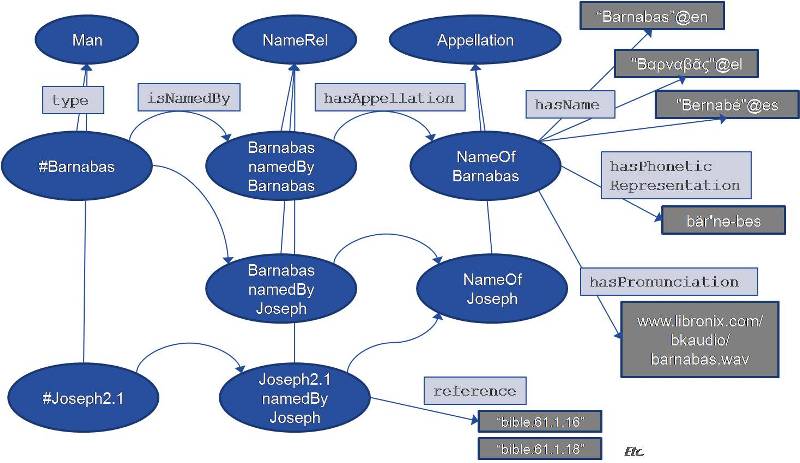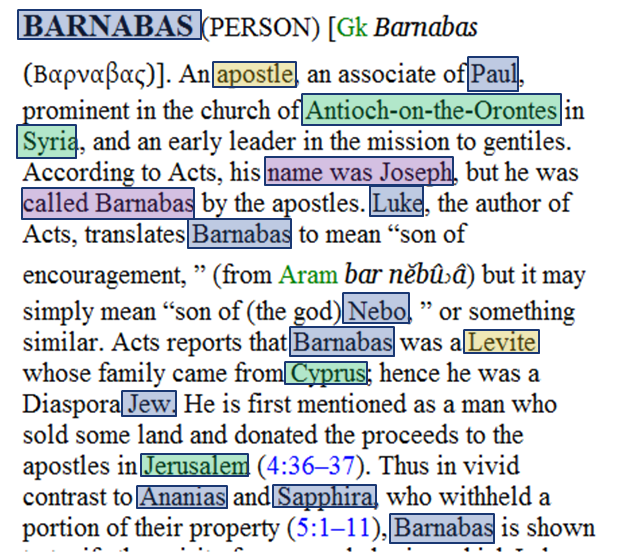











"Did God really say, 'You must not eat from any tree in the garden'?" (Gen 3.1)
∃X: X = "You must not ..." & assert(God, X)
false.






 ... organizing the world's Biblical information to:
... organizing the world's Biblical information to:
| Context | Composition | Function | Examples |
|---|---|---|---|
| App | ID | BK ID (≈XML NCName) |
Adam Adam ArkOfNoah agate |
| BK | App prefix + ID | QID | #Adam @Adam $ArkOfNoah $agate |
| XML | namespace or prefix + ID | URI | http://www.libronix.com/ns/2007/bk-agent#Adam or agent:Adam place:Adam thing:ArkOfNoah thing:agate |

[In the actual presentation, these hyperlinks went to live demonstrations: there's no way to provide that in this web version.]

